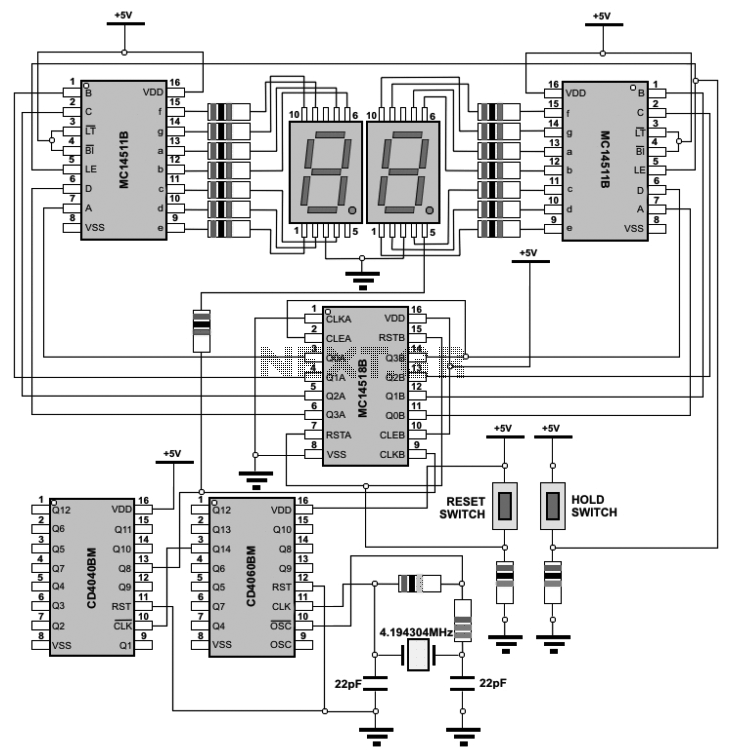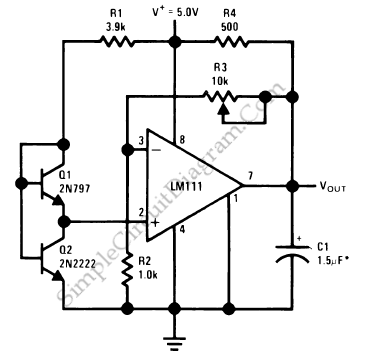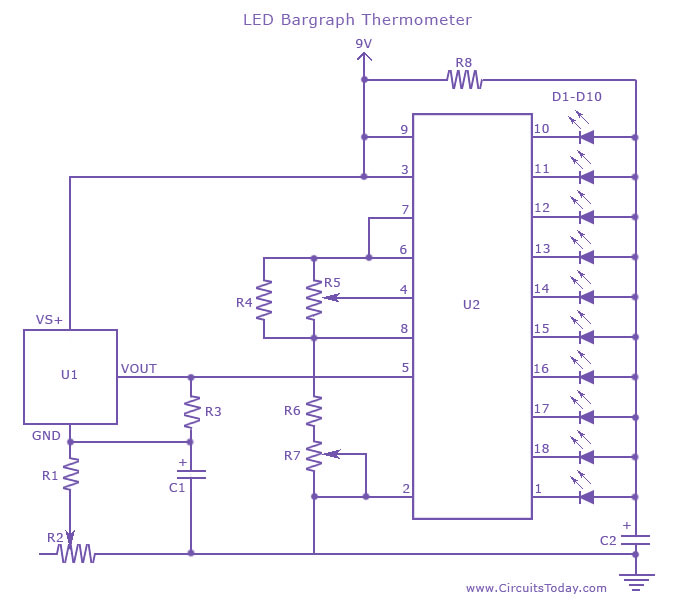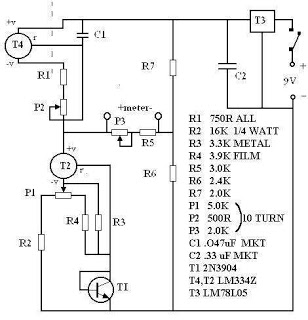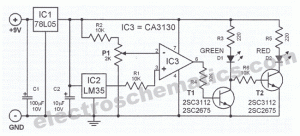
Digital thermometer with zero adjust
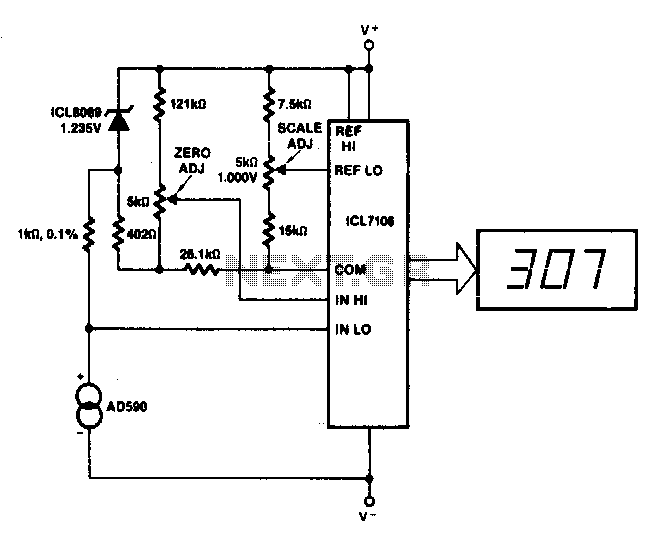
This circuit allows for zero adjustment as well as slope adjustment. The ICL8069 brings the input within the common-mode range, while the 5 kΩ potentiometers trim any offset at 218 K (-55 °C) and set the scale factor.
The described circuit utilizes the ICL8069 integrated circuit, which is designed to operate within a specified common-mode input range, making it suitable for various sensor applications. This capability is essential for ensuring accurate signal processing, particularly in environments where the input signal may vary significantly.
The circuit incorporates two 5 kΩ potentiometers, which serve critical functions in calibrating the output signal. The first potentiometer is used for zero adjustment, allowing the user to eliminate any unwanted offset in the output signal. This adjustment is particularly important when dealing with low-level signals, where even minor offsets can lead to significant errors in measurement.
The second potentiometer is responsible for slope adjustment, enabling the user to fine-tune the gain or scale factor of the output signal. This feature is crucial for applications that require precise measurements over a range of temperatures, such as those that involve thermistors or other temperature-sensitive components. The specified operating temperature of 218 K (-55 °C) indicates that this circuit is suitable for cryogenic applications, where accurate readings at low temperatures are necessary.
In summary, this circuit design provides essential adjustments for both zero offset and slope, facilitated by the ICL8069 and adjustable potentiometers. This makes it an effective solution for applications requiring precise signal conditioning and calibration in low-temperature environments.This circuit allows zero adjustment as well as slope adjustment The ICL8069 brings the input within the common-mode range, while the 5 K pots trim any offset at 218 °K (—55 °C), and set scale factor.
The described circuit utilizes the ICL8069 integrated circuit, which is designed to operate within a specified common-mode input range, making it suitable for various sensor applications. This capability is essential for ensuring accurate signal processing, particularly in environments where the input signal may vary significantly.
The circuit incorporates two 5 kΩ potentiometers, which serve critical functions in calibrating the output signal. The first potentiometer is used for zero adjustment, allowing the user to eliminate any unwanted offset in the output signal. This adjustment is particularly important when dealing with low-level signals, where even minor offsets can lead to significant errors in measurement.
The second potentiometer is responsible for slope adjustment, enabling the user to fine-tune the gain or scale factor of the output signal. This feature is crucial for applications that require precise measurements over a range of temperatures, such as those that involve thermistors or other temperature-sensitive components. The specified operating temperature of 218 K (-55 °C) indicates that this circuit is suitable for cryogenic applications, where accurate readings at low temperatures are necessary.
In summary, this circuit design provides essential adjustments for both zero offset and slope, facilitated by the ICL8069 and adjustable potentiometers. This makes it an effective solution for applications requiring precise signal conditioning and calibration in low-temperature environments.This circuit allows zero adjustment as well as slope adjustment The ICL8069 brings the input within the common-mode range, while the 5 K pots trim any offset at 218 °K (—55 °C), and set scale factor.
